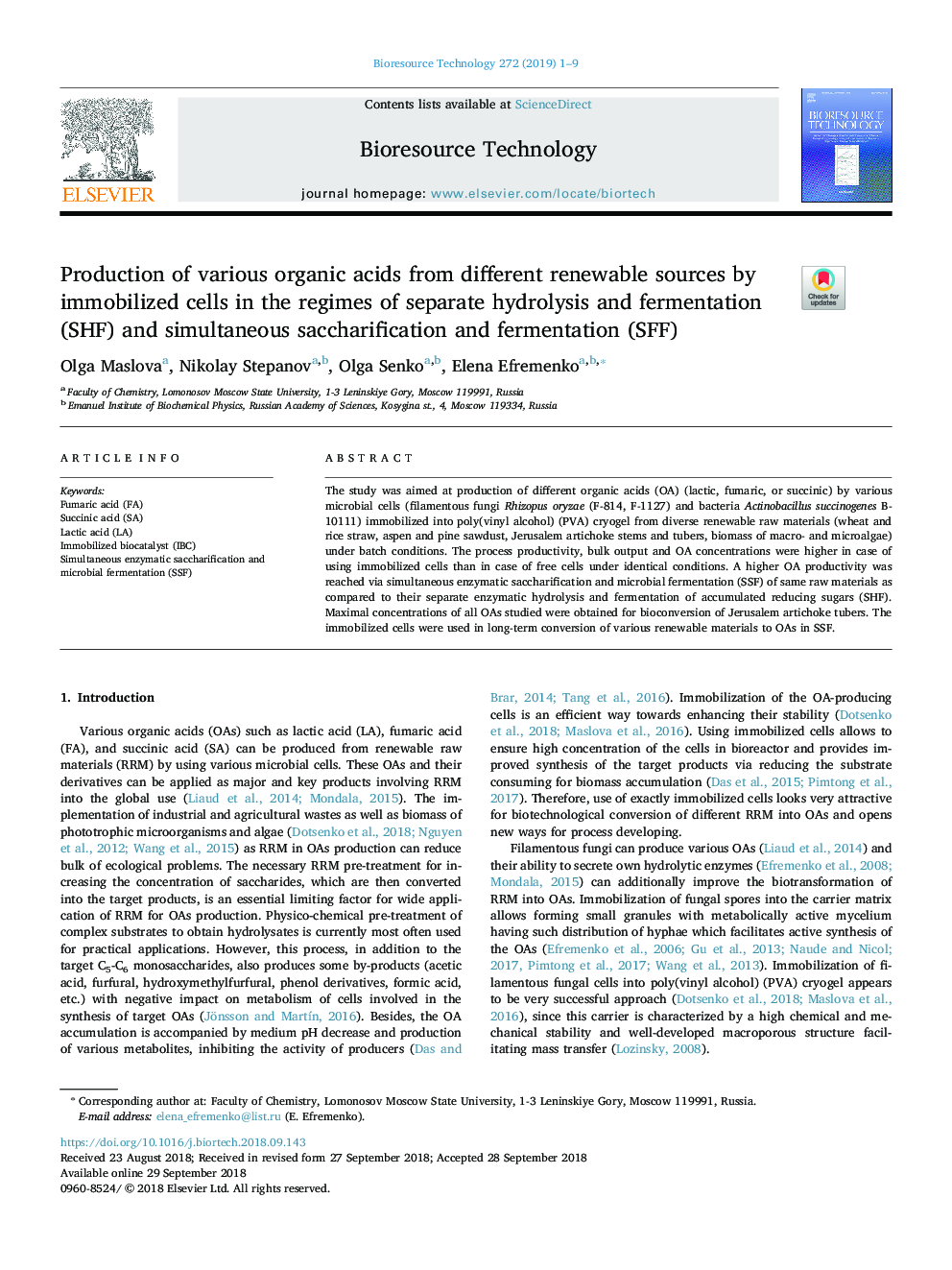| Article ID | Journal | Published Year | Pages | File Type |
|---|---|---|---|---|
| 11012242 | Bioresource Technology | 2019 | 9 Pages |
Abstract
The study was aimed at production of different organic acids (OA) (lactic, fumaric, or succinic) by various microbial cells (filamentous fungi Rhizopus oryzae (F-814, F-1127) and bacteria Actinobacillus succinogenes B-10111) immobilized into poly(vinyl alcohol) (PVA) cryogel from diverse renewable raw materials (wheat and rice straw, aspen and pine sawdust, Jerusalem artichoke stems and tubers, biomass of macro- and microalgae) under batch conditions. The process productivity, bulk output and OA concentrations were higher in case of using immobilized cells than in case of free cells under identical conditions. A higher OA productivity was reached via simultaneous enzymatic saccharification and microbial fermentation (SSF) of same raw materials as compared to their separate enzymatic hydrolysis and fermentation of accumulated reducing sugars (SHF). Maximal concentrations of all OAs studied were obtained for bioconversion of Jerusalem artichoke tubers. The immobilized cells were used in long-term conversion of various renewable materials to OAs in SSF.
Related Topics
Physical Sciences and Engineering
Chemical Engineering
Process Chemistry and Technology
Authors
Olga Maslova, Nikolay Stepanov, Olga Senko, Elena Efremenko,
